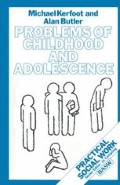Abstract
The term ‘substance abuse’ is most commonly associated with– solvent abuse, though many different kinds of substance may– be involved. The abuse of substances is not a recent phenomenon.– In ancient times a variety of substances were used in– many different cultures to achieve states of euphoria, disorientation,– and depersonalisation, often to give added– significance to ritual or religious gatherings. Pioneer work in– the field of anaesthesia during the eighteenth and nineteenth– centuries led to the introduction, and subsequent abuse of,– such substances as nitrous oxide (laughing gas), ether, and– chloroform. Current concern over substance abuse by young– people perhaps obscures the fact that such abuse has been– quite widespread since the early 1940s (Barnes, 1979). In the– early 1950s there were many reports from the USA of young– people inhaling gasolene fumes. In the late 1950s and early– 1960s reports began to appear of young people increasingly– using solvents for inhalation.–
Preview
Unable to display preview. Download preview PDF.
Copyright information
© 1988 British Association of Social Workers
About this chapter
Cite this chapter
Kerfoot, M., Butler, A. (1988). Substance Abuse. In: Problems of Childhood and Adolescence. Practical Social Work. Palgrave Macmillan, London. https://doi.org/10.1007/978-1-349-19311-0_10
Download citation
DOI: https://doi.org/10.1007/978-1-349-19311-0_10
Publisher Name: Palgrave Macmillan, London
Print ISBN: 978-0-333-42071-3
Online ISBN: 978-1-349-19311-0
eBook Packages: Palgrave Social & Cultural Studies CollectionSocial Sciences (R0)

